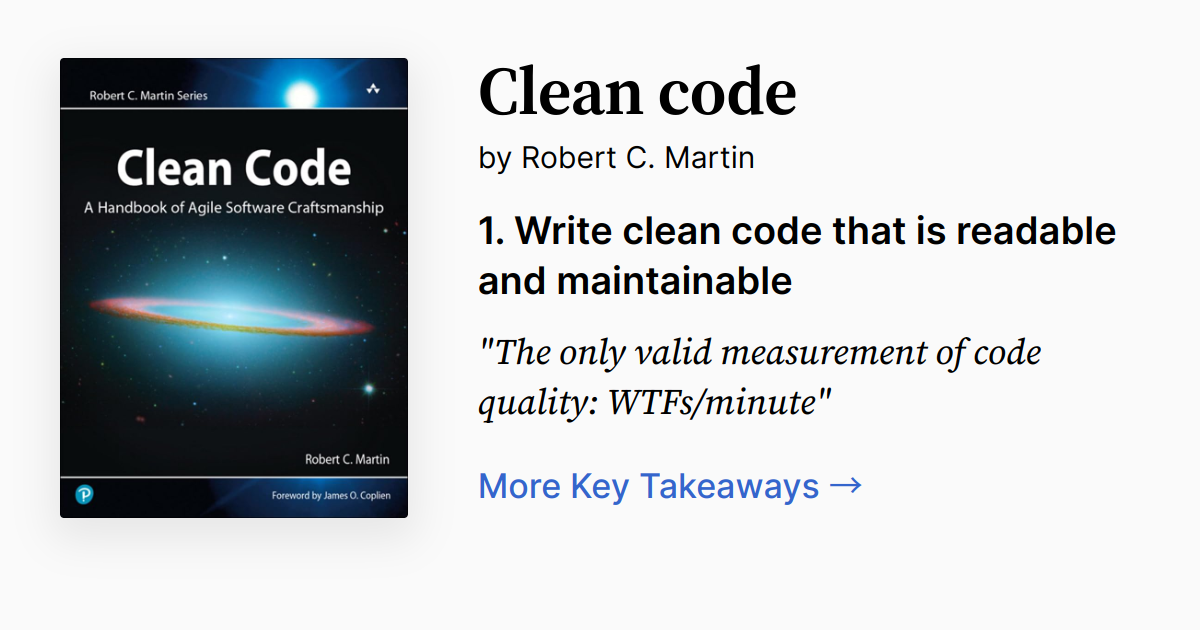Detailed Clean Code Series:

Clean Code Book (Photo Credit: SoBrief)
Book introduction
“Clean Code: A Handbook of Agile Software Craftsmanship” by Robert C. Martin (popularly known as Uncle Bob) is one of the most influential books in software engineering. It focuses on the principles, patterns, and best practices for writing clean, maintainable, and efficient code.
The book emphasizes that code is read far more often than it is written, so clarity, simplicity, and readability are critical for long-term success in software projects.
About Author
Robert C. Martin, widely known as Uncle Bob, is a famous software engineer, author, and influential thought leader in the software development community. With over five decades of experience, he has been a strong advocate of clean coding practices, Agile methodologies, and software craftsmanship.
He is one of the original authors of the Agile Manifesto (2001) and has written several well-regarded books, including Clean Code, The Clean Coder, Clean Architecture, and Agile Software Development: Principles, Patterns, and Practices.
In short: He’s a pioneer in promoting professionalism in software development and a mentor figure for developers striving to improve their craft.
High-level Overview
In this book, Uncle Bob introduces practical techniques—such as meaningful naming, small functions, proper formatting, error handling, and unit testing—to help developers write code that is easy to understand and modify.
It is structured in three parts:
- Principles, patterns, and practices of clean coding.
- Case studies, showing the step-by-step transformation of messy code into clean code.
- Heuristics and best practices, serving as a reference guide.
Key Takeaways
- Code is read more often than it is written → prioritize readability and clarity.
- Meaningful names → choose descriptive, unambiguous names for variables, functions, and classes.
- Functions should be small and do one thing well → keep them short, focused, and expressive.
- Keep classes cohesive → a class should have a single responsibility.
- Avoid duplication → duplicate code leads to bugs and harder maintenance.
- Use clear formatting and structure → consistent indentation, spacing, and layout improve readability.
- Error handling should not obscure logic → use exceptions wisely and keep business logic clean.
- Write expressive tests → automated tests make code safer to change and act as living documentation.
- Refactor continuously → always improve code when you touch it, don’t let it rot.
- Comments are a last resort → write code that explains itself; use comments only when necessary.
- Clean code is simple but not simplistic → clarity, elegance, and maintainability matter more than cleverness.
- Professionalism matters → writing clean code is part of being a responsible software developer.
In short: Clean Code is about discipline, simplicity, and craftsmanship in software development.
Conclusion
Clean Code teaches that writing code is not just about making it work, but making it clear, simple, and maintainable. Clean code is easy to read, easy to change, and reflects professionalism and care from the developer. Following its principles leads to better software, happier teams, and long-lasting quality.